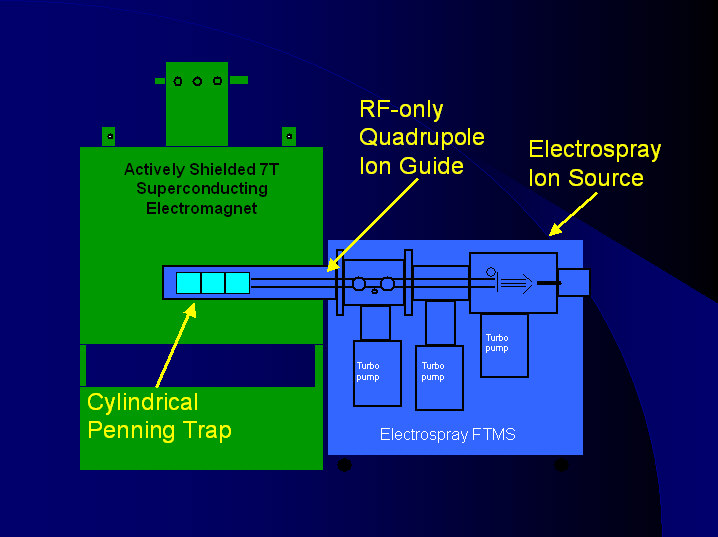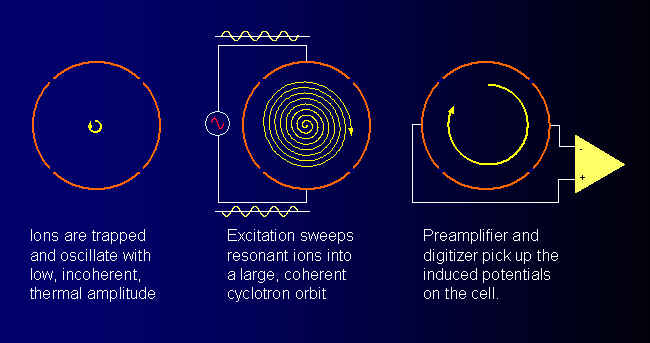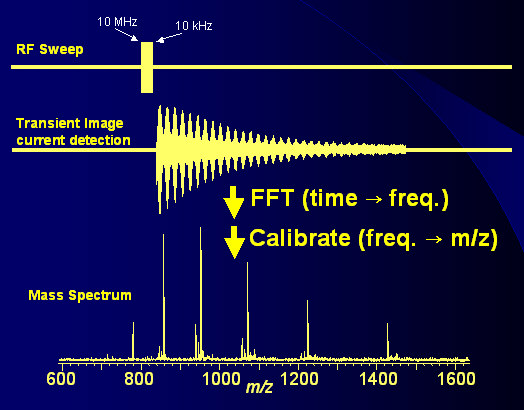FTMS Introduction
Fourier Transform Mass Spectrometry
An excellent review article1 was recently published by Alan G. Marshall regarding Fourier Transform Mass Spectrometry and if interested, I strongly recommend it.

The Fourier Transform Ion Cyclotron Resonance Mass Spectrometer (FTICRMS or FTMS) consists of an ion source (in this case an Electrospray ion source), some ion optics to transfer the ions into the magnetic field (in this case an RF-Only Quadrupole ion guide), and the Ion Cyclotron Resonance (ICR) cell or Penning trap. While cyclotron resonance has been around since E. O. Lawrence won the Nobel Prize for it in 1939, Alan G. Marshall and Mel Comisarow,2 in 1974, in were the first to recognize that inductive detection of the cylotron motion followed by use of the Fast Fourier Transform would allow the cyclotron to become a high performance mass spectrometer.
The principle of ion cyclotron resonance is quite simple. Ions have a fundamental oscillation frequency in a magnetic field which can be calculated by the simple equation:

After ion’s are trapped in the ICR cell, they are excited by a resonant excitation pulse into a coherent orbit. The excitation amplifier is then turned off and the ions continue to orbit at their final radius. Ions moving near electrodes cause an image charge to form on these electrodes to balance the ions’ electric field. In the case of a circular orbit, this image charge will oscillate at the ion’s resonant frequency, and can be detected by a sensitive preamplifier circuit, digitized, and stored in computer memory.

Of course, in mass spectrometry, we wish to detect all ions (particularly those we don’t expect) within some known mass range, but the figure above is only detecting a single ion (or ion packet) of a single m/z ratio. Thus, in practice, we cannot use a resonant excitation pulse very often and must sweep through all the expected frequencies to excite and detect all the expected ions. Thus:

1. Marshall, A. G. Milestones in fourier transform ion cyclotron resonance mass spectrometry technique development Int. J. Mass Spectrom. Ion Processes 2000, 200, 331-356.
2. Comisarow, M. B.; Marshall, A. G. Fourier transform ion cyclotron resonance spectroscopy Chem. Phys. Lett. 1974, 25, 282-283.